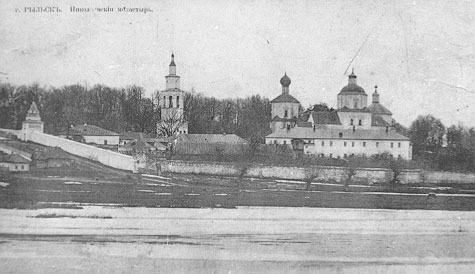|
Sofiya Kalistratova
Sofiya Vasilyevna Kalistratova (), also known as Sofia Kallistratova (; – 5 December 1989) was a public defense lawyer in the Soviet Union. She defended various Soviet dissidents and from 1977 was a member of the Moscow Helsinki Group (MHG), distributing information about human rights violations in the Soviet Union. Biography . Born in the town of Rylsk, she graduated from the Moscow State University, specializing in the field of law. Unable to find a position in prosecutor's office, she began her activity as public defender at the Moscow College of Advocates (Московская Коллегия адвокатов). According to rumors, in the 1960s, the officer who was issuing her with a new passport, misspelled the last name "Kallistratova" as "Kalistratova". Sofiya did not make a big deal out of it and signed the documents as Kalistratova ever since.''Kristina Gorelik''У правозащитного движения женское лицо She joined the Moscow He ... [...More Info...] [...Related Items...] OR: [Wikipedia] [Google] [Baidu] |
Rylsk, Russia
Rylsk () is a town and the administrative center of Rylsky District in Kursk Oblast, western Russia, located on the right bank of the Seym River (Dnieper's basin) west of Kursk, the administrative center of the oblast. Population: 19,000 (1974). History Rylsk was first mentioned in a chronicle in 1152 as one of the Severian towns. It had become the seat of an appanage principality by the end of the 12th century before coming into the hands of Lithuanian rulers sometime in the late 13th or early 14th century. The Polish king Casimir IV made a grant of it to Dmitry Shemyaka's son Ivan, who had settled in Lithuania. Ivan's son Vasily defected to the Grand Duchy of Moscow, but Lithuanians held the town until 1522. During the Time of Troubles, it was one of the first towns to welcome False Dmitry I as the Tsar. After Ukraine's integration into the Russian Empire, Rylsk capitalized on the trade between Little Russia and Great Russia. Numerous merchants resided in the ... [...More Info...] [...Related Items...] OR: [Wikipedia] [Google] [Baidu] |
Perestroika
''Perestroika'' ( ; rus, перестройка, r=perestrojka, p=pʲɪrʲɪˈstrojkə, a=ru-perestroika.ogg, links=no) was a political reform movement within the Communist Party of the Soviet Union (CPSU) during the late 1980s, widely associated with CPSU general secretary Mikhail Gorbachev and his '' glasnost'' (meaning "transparency") policy reform. The literal meaning of ''perestroika'' is "restructuring," referring to the restructuring of the political economy of the Soviet Union in an attempt to end the Era of Stagnation. ''Perestroika'' allowed more independent actions from various ministries and introduced many market-like reforms. The purported goal of ''perestroika'' was not to end the planned economy, but rather to make socialism work more efficiently to better meet the needs of Soviet citizens by adopting elements of liberal economics. The process of implementing ''perestroika'' added to existing shortage and created political, social, and economic tensions wi ... [...More Info...] [...Related Items...] OR: [Wikipedia] [Google] [Baidu] |
Women Human Rights Activists
A woman is an adult female human. Before adulthood, a female child or adolescent is referred to as a girl. Typically, women are of the female sex and inherit a pair of X chromosomes, one from each parent, and women with functional uteruses are capable of pregnancy and giving birth from puberty until menopause. More generally, sex differentiation of the female fetus is governed by the lack of a present, or functioning, '' SRY'' gene on either one of the respective sex chromosomes. Female anatomy is distinguished from male anatomy by the female reproductive system, which includes the ovaries, fallopian tubes, uterus, vagina, and vulva. An adult woman generally has a wider pelvis, broader hips, and larger breasts than an adult man. These characteristics facilitate childbirth and breastfeeding. Women typically have less facial and other body hair, have a higher body fat composition, and are on average shorter and less muscular than men. Throughout human history, traditional ... [...More Info...] [...Related Items...] OR: [Wikipedia] [Google] [Baidu] |
Soviet Human Rights Activists
The Union of Soviet Socialist Republics. (USSR), commonly known as the Soviet Union, was a List of former transcontinental countries#Since 1700, transcontinental country that spanned much of Eurasia from 1922 until Dissolution of the Soviet Union, it dissolved in 1991. During its existence, it was the list of countries and dependencies by area, largest country by area, extending across Time in Russia, eleven time zones and sharing Geography of the Soviet Union#Borders and neighbors, borders with twelve countries, and the List of countries and dependencies by population, third-most populous country. An overall successor to the Russian Empire, it was nominally organized as a federal union of Republics of the Soviet Union, national republics, the largest and most populous of which was the Russian SFSR. In practice, Government of the Soviet Union, its government and Economy of the Soviet Union, economy were Soviet-type economic planning, highly centralized. As a one-party state go ... [...More Info...] [...Related Items...] OR: [Wikipedia] [Google] [Baidu] |
Soviet Lawyers
The Union of Soviet Socialist Republics. (USSR), commonly known as the Soviet Union, was a transcontinental country that spanned much of Eurasia from 1922 until it dissolved in 1991. During its existence, it was the largest country by area, extending across eleven time zones and sharing borders with twelve countries, and the third-most populous country. An overall successor to the Russian Empire, it was nominally organized as a federal union of national republics, the largest and most populous of which was the Russian SFSR. In practice, its government and economy were highly centralized. As a one-party state governed by the Communist Party of the Soviet Union (CPSU), it was a flagship communist state. Its capital and largest city was Moscow. The Soviet Union's roots lay in the October Revolution of 1917. The new government, led by Vladimir Lenin, established the Russian SFSR, the world's first constitutionally communist state. The revolution was not accepted by all wi ... [...More Info...] [...Related Items...] OR: [Wikipedia] [Google] [Baidu] |



